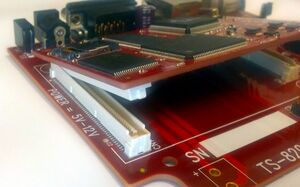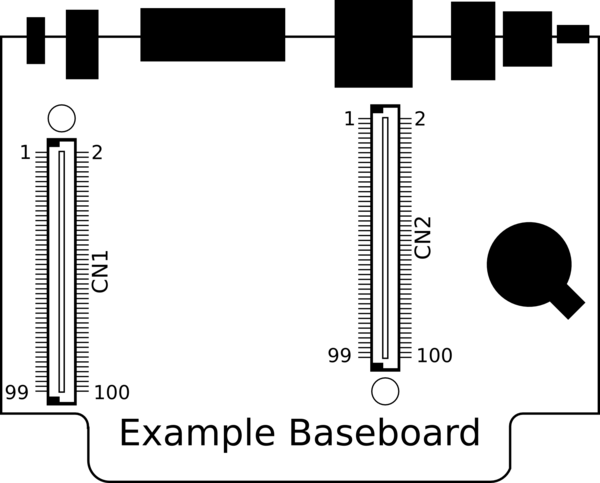Generic TS-Socket: Difference between revisions
From embeddedTS Manuals
No edit summary |
No edit summary |
||
| Line 1: | Line 1: | ||
The TS-SOCKET macrocontrollers all use two high density 100 pin connectors for power and all I/O. These follow a common pinout for various external interfaces so new modules can be dropped in to lower power consumption or use a more powerful processor. The male connector is on the baseboard, and the female connector is on the macrocontroller. | The TS-SOCKET macrocontrollers all use two high density 100 pin connectors for power and all I/O. These follow a common pinout for various external interfaces so new modules can be dropped in to lower power consumption or use a more powerful processor. The male connector is on the baseboard, and the female connector is on the macrocontroller. You can find the datasheet for the baseboard's male connector [http://www.embeddedarm.com/documentation/cn-tssocket-m-spec.pdf here]. | ||
[[File:TS-Socket connector photo.jpg|300px|right|TS-Socket]] | [[File:TS-Socket connector photo.jpg|300px|right|TS-Socket]] | ||
Revision as of 17:24, 19 September 2012
The TS-SOCKET macrocontrollers all use two high density 100 pin connectors for power and all I/O. These follow a common pinout for various external interfaces so new modules can be dropped in to lower power consumption or use a more powerful processor. The male connector is on the baseboard, and the female connector is on the macrocontroller. You can find the datasheet for the baseboard's male connector here.
We have an Eaglecad library available for developing a custom baseboard here. We also provide the entire PCB design for the TS-8200 baseboard here which you can modify for your own design.
In our schematics and our table layout below, we refer to pin 1 from the male connector on the baseboard.

